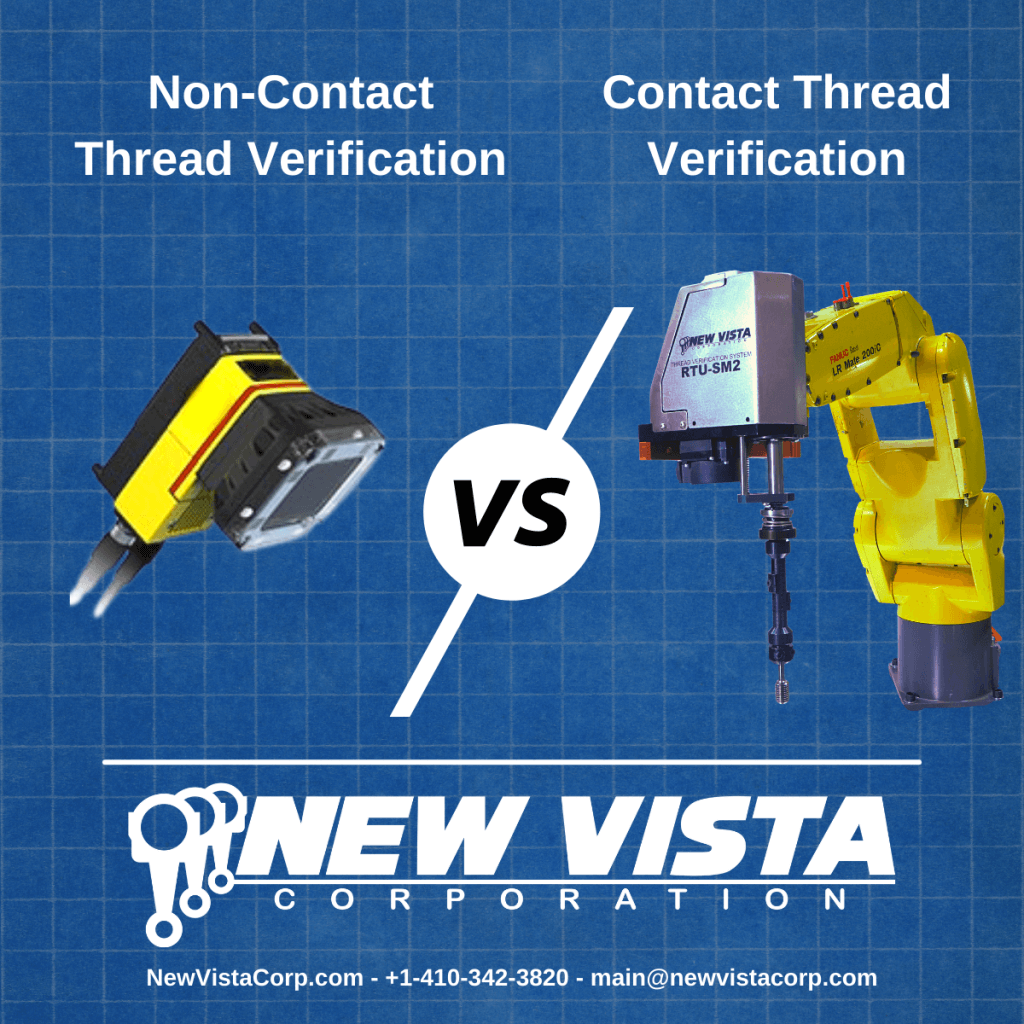What is the best way to guarantee that a glove fits? You could measure every feature of the glove, but you will only be confident in the fit when you try it on.

The same considerations must be made when choosing between contact and non-contact thread verification methods. In the example above, contact gaging is simply putting your hand into the glove, whereas non-contact inspection involves using a camera system to measure threaded features. While New Vista offers solutions for both methods, manufacturers tend to prefer contact verification.
Contact
The majority of New Vista’s Systems are “contact”, meaning that an actual Thread Gage Member is screwed into (or onto), and then back out of the thread being verified. The system works equally well with internal or external threads.
Non-Contact
Non-contact thread verification is used in manufacturing plants as well, but for slightly different reasons. Non-contact thread verification methods typically consist of vision systems, which use cameras, or laser-based optical scanning, to discern whether or not threads are present, and in some cases to measure the threads. The most commonly used thread vision systems are for parts and components like bolts, screws, or threaded-end rods, where the parts are passing by in rapid succession, and the objective is to pick out the ones with missing threads.
Assemblability
Despite their speed, Non-contact verification methods have a major disadvantage: these systems cannot guarantee assemblability. Positive assemblability means that the mating parts will assemble together correctly. With contact thread verification, if the thread gage members are selected properly, successful assembly of the gaged part (with its mating part) is assured. In addition, contact gaging can be directly correlated with hand gaging, which is familiar to everyone, and where the gages and techniques are widely accepted and very consistent across wide swathes of industries and manufacturing plants.
Prior to 2006, it was widely regarded that a contact system would not be sufficiently fast nor sufficiently reliable for use in a production environment. At that time, noncontact systems were the preferred technology, in spite of the fact that those systems could not provide a positive assemblability. The introduction of New Vista’s high-speed torque responsive devices changed peoples’ perceptions, to the extent that today a large percentage of New Vista’s orders are to replace the older noncontact installations. New Vista Contact Thread-Verification Units are extensively employed in automotive parts plants, at production facilities for aircraft componentry and for industrial and construction equipment, and for constituent parts of medical devices.
When it comes to verifying assemblability, contact verification is often the better method, although there are occasional circumstances when non-contact is suitable. Contact us today to determine the best solution for your parts!
